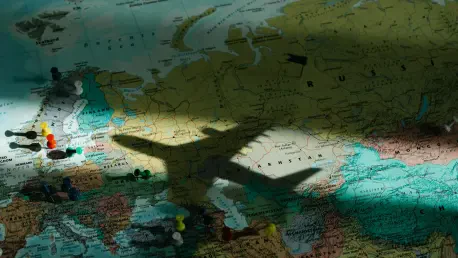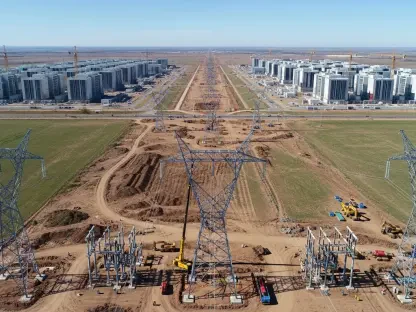What happens when two titans of the telecom industry, Ericsson and Nokia, find themselves caught in a geopolitical tug-of-war, losing billions in a key market like China while struggling to make up ground in their European backyard? This isn’t just a corporate challenge—it’s a high-stakes drama unfolding on a global stage, where technology, politics, and national security collide. With billions of dollars and the future of connectivity at stake, the plight of these Nordic giants reveals a deeper story about a fracturing world of telecommunications.
Why Are Telecom Titans Caught in Geopolitical Crosshairs?
The telecom sector has become a battleground for superpower rivalries, with Ericsson and Nokia squeezed between Western policies and Eastern retaliation. As the United States and European nations restrict Chinese vendors like Huawei over security concerns, China has responded by sidelining Western firms, slashing market access for these European companies. This clash isn’t merely about business; it’s a reflection of how global tech dominance is being reshaped by political forces far beyond corporate control.
The impact is stark. China, once a promising frontier for 5G growth, has become a near-impossible market for the Nordic duo, with sales plummeting as a direct consequence of geopolitical bans. Meanwhile, Europe, their home turf, offers no easy refuge due to its own economic and structural constraints. This dual challenge raises a pressing question: can these industry leaders adapt to a world where borders are drawn not just on maps, but in technology itself?
The High Cost of a Shrinking Chinese Market and a Stalled Europe
China’s market, a powerhouse for telecom revenue, has turned hostile for Ericsson and Nokia due to retaliatory measures following Western restrictions on Chinese tech. Nokia’s sales in Greater China have halved since five years ago, dropping to €1.1 billion by last year, with a further 23% decline in the first half of this year. This isn’t just a financial hit; it’s a strategic loss in a region driving global 5G deployment, leaving the companies scrambling for alternatives.
Europe, despite its vast population of over 450 million, accounts for a mere 8% of global radio access network spending, estimated at $2.9 billion annually. With much of this already tied to Ericsson and Nokia, there’s little room to grow. The region’s fragmented market, burdened by too many operators competing on razor-thin margins, stifles investment in cutting-edge networks, limiting the potential for these firms to offset their losses from elsewhere.
This dynamic illustrates a broader trend of a bifurcating tech landscape, where national security and economic policies dictate market access. The result is a telecom ecosystem split by allegiance, forcing companies to navigate not just commercial competition but also the weight of governmental agendas. The stakes couldn’t be higher as global connectivity hangs in the balance.
Unpacking the Barriers: Market Lockouts and Innovation Risks
The challenges facing Ericsson and Nokia are multifaceted, starting with near-total exclusion from China. Labeled as “untrusted” vendors in a mirror to Western bans on Huawei, their presence in the world’s largest telecom market has dwindled to almost nothing. This lockout deprives them of critical revenue and a foothold in a region that shapes global trends in network infrastructure.
In Europe, the hurdles are equally daunting. Intense competition among operators—80 of them serving a population of 400-500 million—drives prices down, leaving little capital for network upgrades that vendors depend on. Additionally, the loss of China as a testing ground for advanced 5G and pre-6G technologies threatens to erode their competitive edge, as Chinese operators push boundaries that Western markets lag behind in adopting.
Further complicating the picture is the struggle in neutral regions like Latin America, where Chinese influence often sways vendor choices. In countries such as Colombia, reliance on Huawei equipment underscores the uphill battle for Nordic firms in these “gray area” markets. Each of these obstacles highlights an industry at a pivotal moment, forced to rethink its approach in a divided world.
Industry Perspectives: Frustration and Forewarnings
Insights from industry leaders paint a vivid picture of the crisis. Nokia’s CEO Justin Hotard has openly criticized the lack of reciprocity in market access, noting that Huawei holds a 60% share of Germany’s radio network market while Nordic firms are effectively barred from China. This imbalance fuels a growing sense of unfairness among executives who see their opportunities shrinking due to forces beyond their control.
Analysts echo these concerns with a sharper edge. John Strand of Strand Consult argues that losing China isn’t merely a revenue blow—it’s a strategic disaster that hampers innovation. With Europe’s inefficiencies, such as Denmark’s four operators serving just 5-6 million people, the structural barriers compound the geopolitical ones. These voices collectively signal a telecom sector grappling with challenges that are as much about policy as they are about profit.
The frustration is palpable, as data reveals the depth of the mismatch. While Chinese vendors continue to operate in key European markets, the reverse isn’t true, creating a lopsided playing field. This disparity underscores the urgent need for solutions that address not just market dynamics but also the political currents steering them.
Charting a Path Forward: Strategies for a Fragmented Landscape
Navigating this storm demands bold strategies tailored to a fractured market. One approach is to target undecided regions like Africa and Latin America, building partnerships and emphasizing security advantages over Chinese competitors. By positioning themselves as trusted alternatives, Ericsson and Nokia could carve out new footholds in areas not yet dominated by geopolitical alignments.
Another critical step lies in pushing for policy reform within Europe. Advocating for operator consolidation and increased network investment could create a stronger home base, enabling the companies to secure more substantial contracts. Simultaneously, forging innovation alliances with firms in the US or Japan, such as Samsung or NEC, offers a way to counter the loss of China’s cutting-edge testing environment.
Finally, fostering international dialogue to prevent a complete East-West telecom split remains essential. Ensuring unified standards for future technologies like 6G could mitigate the risks of a divided industry. These strategies, while challenging, provide a blueprint for resilience, offering hope that Ericsson and Nokia can weather the geopolitical turbulence reshaping their world.
Reflecting on a Divided Past and Building a Connected Tomorrow
Looking back, the journey of Ericsson and Nokia through a geopolitically charged telecom landscape revealed the profound impact of national policies on corporate fortunes. Their struggle to maintain relevance amid shrinking access to China and stagnant growth in Europe highlighted a world where technology was no longer a unifier but a divider. Each loss in market share and every missed innovation opportunity underscored the cost of a fragmented industry.
Yet, the path ahead held potential for transformation. By doubling down on emerging markets, advocating for structural changes in Europe, and seeking collaborative innovation hubs, these Nordic giants could reclaim lost ground. The broader industry, too, needed to prioritize dialogue over division, ensuring that future connectivity standards bridged rather than widened global gaps. In this pivotal moment, the focus had to shift toward building alliances and fostering resilience, turning past setbacks into stepping stones for a more connected tomorrow.









